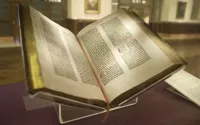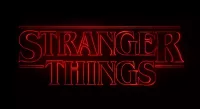Superman, created by Jerry Siegel and Joe Shuster, debuted in Action Comics #1 in 1938. He is a quintessential American superhero who has been featured consistently in comic books since his creation. Superman's popularity has led to his adaptation across various media, including radio, novels, films, television, theater, and video games, solidifying his place as a cultural icon.
1909: Renewal Option in the Copyright Act
In 1965, Siegel and Shuster attempted to regain rights to Superman using the renewal option in the Copyright Act of 1909.
1909: Copyright Act of 1909
In March 1948, the trial between DC Comics and Fawcett Comics began, with the judge ruling that copyright notices on the Superman newspaper strips didn't meet the standards of the Copyright Act of 1909.
1927: Release of Metropolis
In 1927, the film Metropolis was released and the name of Superman's home city, Metropolis, was taken from this movie.
1930: Publication of Gladiator
In 1930, Philip Wylie's novel Gladiator, featuring Hugo Danner with powers similar to Superman, was published and served as an influence on the Superman character.
1932: Siegel and Shuster Meet
In 1932, Jerry Siegel and Joe Shuster met at Glenville High School in Cleveland and bonded over their admiration of fiction, beginning their collaborative journey.
January 1933: "The Reign of the Superman" Publication
In January 1933, Jerry Siegel published "The Reign of the Superman" in his magazine. The story featured Bill Dunn, who gains mind-reading, mind-control, and clairvoyance powers from an experimental drug, illustrated by Joe Shuster.
May 1933: Consolidated Book Publishers Comic Book
In May 1933, Consolidated Book Publishers published Detective Dan: Secret Operative 48, a comic book featuring all-original stories, marking a novelty at the time.
July 1933: Letter to Leo O'Mealia
In July 1933, Jerry Siegel sent a letter to Leo O'Mealia with a Superman script. The origin story changes, Superman is a scientist-adventurer from the far future. O'Mealia produced a few strips, but they were rejected.
June 1934: Partnership with Russell Keaton
In June 1934, Jerry Siegel partnered with artist Russell Keaton, who drew the Buck Rogers and Skyroads comic strips. Siegel sent Keaton a script in June, featuring a changed Superman origin story.
June 1935: Work with National Allied Publications
In June 1935, Jerry Siegel and Joe Shuster began working with National Allied Publications, owned by Malcolm Wheeler-Nicholson. Wheeler-Nicholson published two of their strips in New Fun Comics #6 (1935): "Henri Duval" and "Doctor Occult".
1935: Superman's Origin Changes Again
In 1935, in the script that Siegel sent Keaton, Superman's origin story further evolved: In the distant future, when Earth is on the verge of exploding due to "giant cataclysms", the last surviving man sends his three-year-old son back in time to the year 1935.
1936: Formation of Detective Comics, Inc.
In 1936, Malcolm Wheeler-Nicholson formed a joint corporation with Harry Donenfeld and Jack Liebowitz called Detective Comics, Inc. to release the magazine Detective Comics.
December 1937: Liebowitz Asks for Comics
In early December 1937, Jack Liebowitz asked Jerry Siegel to produce comics for an upcoming anthology magazine called Action Comics, though Siegel did not initially propose Superman.
January 1938: Donenfeld and Liebowitz Seize Wheeler-Nicholson's Company
In early January 1938, Harry Donenfeld and Jack Liebowitz petitioned Malcolm Wheeler-Nicholson's company into bankruptcy and seized it due to deep debt.
January 1938: Rejection from McClure & Superman Accepted for Action Comics
In early January 1938, McClure Newspaper Syndicate rejected Superman and Max Gaines asked if he could forward their Superman strips to Liebowitz so that Liebowitz could consider them for Action Comics. Siegel agreed.
March 1, 1938: Siegel and Shuster Give Away Superman Copyright
On March 1, 1938, Jerry Siegel and Joe Shuster gave away the copyright to Superman to DC Comics prior to Superman's first publication in April.
April 1938: Action Comics Publication
In April 1938, Action Comics, the first and oldest Superman periodical comic book published by DC Comics, began publication.
April 18, 1938: Action Comics #1 Publication
On April 18, 1938, Superman, created by writer Jerry Siegel and artist Joe Shuster, first appeared in Action Comics #1, published in the United States.
August 1938: Superman Chest Logo Trademarked
In August 1938, DC Comics trademarked the Superman chest logo.
1938: Kryptonian abilities explained
In 1938, Action Comics #1 explained that Superman's strength was inherent to Kryptonians due to their advanced evolution.
1938: Action Comics #1: Superman's Origin
In 1938, Action Comics #1 introduced Superman's origin story: born on an alien planet, sent to Earth as a baby before his planet's destruction, and raised by the Kents.
1938: Superman Represents a Corbusierian Ideal
In 1938, Scott Bukatman noted that Superman represented a Corbusierian ideal, humanizing urban areas and rendering the city open and democratic through his abilities.
1938: Popularizing the Superhero Archetype
In 1938, Superman's success led to a wave of imitations, including Batman, Captain America, and Captain Marvel, marking the beginning of the Golden Age of Comic Books.
1938: Origin Story Template
In 1938, the origin story and supporting cast details of Superman were released, and while variations exist, most versions conform to a basic template.
1938: Siegel and Shuster Transferred Renewal Rights to DC Comics
In 1965, the court ruled that Siegel and Shuster had transferred the renewal rights to DC Comics in 1938.
1938: Consistent Elements of Superman Narrative
Since 1938, several elements of the Superman narrative have remained consistent in the stories published.
1938: Variations in Superman's abilities
Since 1938, the extent of Superman's abilities and strength has varied considerably throughout Superman fiction.
1938: Superman's invulnerability
Since Action Comics #1 in 1938, Superman's body has been highly durable, making him invulnerable to bullets and other forms of harm.
1938: Superman's superhuman strength
Since the debut of Action Comics #1 in 1938, Superman has possessed superhuman strength, demonstrated by lifting a car over his head on the cover.
1938: Action Comics #1 Publication
Under current US copyright law, the character as he is depicted in Action Comics #1, which was published in 1938, is due to enter the US public domain on January 1, 2034.
January 1939: Superman Daily Comic Strip
In January 1939, a Superman daily comic strip appeared in newspapers, syndicated through the McClure Syndicate.
June 1939: Superman Periodical Publication
In June 1939, Superman, the second oldest Superman periodical published by DC Comics, began publication.
June 1939: Introduction of Ultra-Humanite
In June 1939, the mad scientist Ultra-Humanite was introduced in Action Comics #13 as Superman's first recurring villain.
October 1939: Establishment of Superman, Inc.
In October 1939, Jack Liebowitz established Superman, Inc. to develop the franchise beyond the comic books.
December 1939: Captain Marvel's First Publication
In December 1939, Captain Marvel, published by Fawcett Comics, debuted, bearing many similarities to Superman. DC Comics later filed a lawsuit for copyright infringement.
1939: Superman's X-ray vision
In 1939, Superman first uses his X-ray vision in Action Comics #11, allowing him to see through objects.
1939: Earliest Superman Paraphernalia
In 1939, the earliest Superman paraphernalia appeared, including a button for the Supermen of America club and a wooden doll made by the Ideal Novelty and Toy Company.
1939: Superman's superhuman hearing
Superman's superhuman hearing, allowing him to hear faint sounds and frequencies outside the human range, was introduced in 1939 in Action Comics #11.
April 1940: Introduction of Lex Luthor
In April 1940, Superman's best-known nemesis, Lex Luthor, was introduced in Action Comics #23.
May 1940: Advertisement for 'Krypto-Raygun'
In May 1940, Superman #5 carried an advertisement for a "Krypto-Raygun", a device that could project images on a wall.
1940: The Adventures of Superman Radio Show Debut
In 1940, The Adventures of Superman, the first adaptation of Superman beyond comic books, debuted as a radio show. Bud Collyer was the voice actor for Superman in most episodes.
1940: Hiring of Whitney Ellsworth
In 1940, Whitney Ellsworth was hired as an editor. Superman stories were put under careful oversight. Siegel was forced to tone down the violence. Editor Whitney Ellsworth dictated that Superman not kill.
1940: Nazis denounce Superman
In 1940, the Schutzstaffel (SS) newspaper Das Schwarze Korps denounced Superman and his creator Jerry Siegel, claiming that Superman was a Jew.
1940: Superman's Code of Conduct
In late 1940, editor Whitney Ellsworth instituted a code of conduct for Superman, banning him from killing and softening his personality with a sense of humanitarianism.
1940: Superman's superhuman breath
Since Action Comics #20 in 1940, Superman has possessed superhuman breath, enabling him to inhale or blow huge amounts of air.
1940: Superman gains the ability to fly
Superman gained the ability to fly in 1940, during the second episode of the radio serial, moving beyond just running and leaping.
1941: Newspaper Strip Readership
By 1941, the newspaper strips had an estimated readership of 20 million.
1941: Mort Weisinger Becomes Editor
In 1941, Mort Weisinger became the editor on Superman comics until 1970, briefly interrupted by military service.
August 1942: Lois Lane suspects Clark is Superman
In August 1942, Superman #17 featured a story where Lois Lane suspects that Clark Kent is Superman and tries to prove it, but Superman manages to deceive her.
1942: Superman works with the police
By 1942, Superman was working alongside the police, a change from his initial portrayal as a vigilante.
1942: Spinoff Novel Changes Names
In 1942, in a spinoff novel by George Lowther, the names of Superman's biological parents, initially Kal-L, Jor-L and Lora in newspaper strips, were changed to Jor-el and Lara.
1943: Siegel Conscripted, Superboy Story Published
In 1943, Jerry Siegel was conscripted into the United States Army, leading to ghostwriters taking over his Superman stories. DC Comics published a Superboy story based on an old Siegel script, without buying the character.
1943: Siegel Joins the Army
In 1943, Jerry Siegel was conscripted into the United States Army.
1943: Kryptonite first appeared
Kryptonite first appeared in 1943 during an episode of the Superman radio serial.
1944: Stories of Superboy
From 1944, DC Comics regularly published stories of Superman's childhood and adolescent adventures, during which he was known as "Superboy".
1944: Introduction of Mister Mxyzptlk
In 1944, the magical imp Mister Mxyzptlk, Superman's first recurring super-powered adversary, was introduced.
October 1946: Merger of Superman, Inc. with DC Comics
In October 1946, Superman, Inc. merged with DC Comics.
1946: Superman Radio Program Tackles Social Issues
In 1946, Superman radio programs tackled social issues, including a version of the Ku Klux Klan, as well as combating anti-semitism and veteran discrimination.
1947: DC Comics Paid Siegel and Shuster $401,194.85
Between 1938 and 1947, DC Comics paid Siegel and Shuster together at least $401,194.85 (equivalent to $7,550,000 in 2024).
1947: Siegel and Shuster Sue DC Comics
In 1947, after Siegel's discharge from the Army, he and Shuster sued DC Comics for the rights to Superman and Superboy. They settled out-of-court, with DC Comics paying them $94,013.16 (equivalent to $1,230,374 in 2024) for the full rights, and then firing them.
1947: Radio Serial Places Community in Iowa
In 1947, an episode of the radio serial placed the yet unnamed community where Clark Kent grew up in Iowa.
March 1948: Trial Begins in DC vs. Fawcett
In March 1948, the trial between DC Comics and Fawcett Comics began after seven years of discovery. The judge ruled that Fawcett had infringed on Superman's copyright but also that DC Comics had abandoned the copyright to the Action Comics stories.
June 1949: Smallville Named in Superboy #2
In June 1949, the community where Clark Kent grew up was named Smallville in Superboy #2.
1949: Win Mortimer Draws Strips
From 1949 to 1956, the Superman newspaper strips were drawn by Win Mortimer.
1949: Superman's heat vision
In 1949, Superman first used his heat vision in Superman #59 by applying his X-ray vision at its highest intensity.
1949: Adventures of Superman Episodes Lengthened
In 1949, The Adventures of Superman radio episodes were lengthened to 30 minutes.
1949: Kryptonite in comics
Kryptonite first appeared in comics in December 1949 within Superman #61.
1950: End of the Golden Age
Around 1950, the American superhero book sales declined, leading to the cancellation of many characters, marking the end of the Golden Age of Comic Books. Superman was one of the few franchises that survived this decline.
1951: End of The Adventures of Superman Radio Show
In 1951, The Adventures of Superman radio show concluded after running for 2,088 episodes.
1952: Astro Boy Inspired by Mighty Mouse
In 1952, Astro Boy was first published in Japan, inspired by Mighty Mouse, which itself was a parody of Superman, marking the entry of American superhero fiction into Japanese culture.
September 1953: Last Fawcett Captain Marvel Story
In September 1953, the last Captain Marvel story from Fawcett Comics was published, as part of an out-of-court settlement where Fawcett paid DC Comics $400,000 (equivalent to $4,701,000 in 2024).
1954: The Comics Code Authority created
In 1954, the Comics Code Authority was created, but it should not be confused with Ellsworth's code for Superman in 1940.
1955: Curt Swan Succeeds Wayne Boring as Principal Artist
Around 1955, Curt Swan succeeded Wayne Boring as the principal artist on Superman comic books, continuing the evolution of the character's aesthetic style.
1955: Superman Animated Shorts Broadcast in Japan
In 1955, the Superman animated shorts from the 1940s were first broadcast on Japanese television, gaining popularity and inspiring Japan's own superhero genre.
1956: Win Mortimer Draws Strips
From 1949 to 1956, the Superman newspaper strips were drawn by Win Mortimer.
1956: "Adventures of Superman" TV Show in Japan
In 1956, the TV show Adventures of Superman starring George Reeves was broadcast in Japan, further popularizing the superhero genre.
1957: First Japanese Superhero Movie Release
In 1957, the first Japanese superhero movie, Super Giant, was released.
July 1958: Introduction of Brainiac
In July 1958, Superman's first alien villain, Brainiac, debuted in Action Comics #242.
1958: Fortress of Solitude depicted in Action Comics #241
In 1958, Action Comics #241 depicted Superman's Fortress of Solitude as a cave in a mountain, sealed with a heavy door opened by a gigantic key.
1958: Introduction of Letters Columns
In 1958, Mort Weisinger introduced letters columns to encourage feedback and build intimacy with readers.
1958: First Japanese Superhero TV Show
In 1958, the first Japanese superhero TV show, Moonlight Mask, aired.
1959: DC Comics Rehires Jerry Siegel
In 1959, DC Comics rehired Jerry Siegel as a writer.
1959: Superman's freeze breath
Superman's freeze breath was first demonstrated in 1959 within Superman #129.
1960: Sales Data Becomes Public
In 1960, sales data for Superman comic books became public, showing that Superman was the best-selling comic book character of the 1960s and 1970s.
1960: Superboy's costume origin
In 1960, within Superboy #78, Superboy crafts his costume using the indestructible blankets discovered within the spaceship that brought him to Earth.
1961: Superman's first death in Superman #149
In 1961, the first story depicting Superman's death was published in Superman #149, where Lex Luthor murders him using kryptonite. However, this story was considered an "imaginary" tale.
1961: Yellow sun activates Superman's abilities
Superman #146 established in 1961 that Superman's powers, excluding strength, are activated by Earth's yellow sun.
1963: Yellow and red sunlight's impact on Superman's powers
In 1963, Action Comics #300 clarified that all of Superman's powers, including strength, are activated by yellow sunlight and can be deactivated by red sunlight.
1964: Vulnerability to magic established
Superman's vulnerability to magic, where enchanted weapons and spells affect him like a normal human, was established in 1964 in Superman #171.
1965: Siegel and Shuster Attempt to Regain Rights
In 1965, Siegel and Shuster attempted to regain the rights to Superman, using the renewal option in the Copyright Act of 1909, but the court ruled against them, upholding the 1938 transfer of rights to DC Comics. DC fired Siegel again after this second lawsuit.
April 1966: Superman killed and revived
In April 1966, within Superman #188, Superman is killed by kryptonite radiation but is revived in the same issue by an android doppelganger.
May 1966: Newspaper Strip Ended
In May 1966, the Superman newspaper strip ended.
1966: It's a Bird... It's a Plane... It's Superman Musical on Broadway
In 1966, the Tony-nominated musical play, It's a Bird... It's a Plane... It's Superman, premiered on Broadway. Bob Holiday played Clark Kent/Superman, and Patricia Marand played Lois Lane.
1967: Licensing Handled by Licensing Corporation of America
In 1967, after DC Comics merged with Warner Communications, licensing for Superman was handled by the Licensing Corporation of America.
1970: Mort Weisinger Leaves as Editor
In 1941, Mort Weisinger became the editor on Superman comics until 1970, briefly interrupted by military service.
1970: Weisinger Retires, Schwartz Takes Over
In 1970, Julius Weisinger retired as editor of Superman comics, and Julius Schwartz took over. Weisinger admitted to being out of touch with modern readers, prompting Schwartz to update the character and stories.
1971: Time Article on Superman's Popularity
In 1971, Gerald Clarke wrote in Time magazine about Superman's popularity, suggesting it signaled the end of the Horatio Alger myth and saw Superman as continuously updating to maintain relevance.
1972: DC Comics Licenses Captain Marvel
In 1972, DC Comics licensed Captain Marvel and published crossover stories with Superman.
1975: Public Campaign for Creators' Rights
In 1975, Jerry Siegel and other comic book creators launched a public campaign for better compensation. Warner Brothers agreed to give Siegel and Shuster a yearly stipend, medical benefits, and credit in Superman productions in exchange for never contesting ownership.
1976: Copyright Act
In 1996, His heirs attempted to take the rights to Superman using the termination provision of the Copyright Act of 1976.
1977: Newspaper Strip Revival
In 1977, the Superman newspaper strip was revived to coincide with a series of movies released by Warner Bros.
June 1978: Clark reveals his identity to Lois
In June 1978, within Action Comics #484, Clark Kent reveals to Lois Lane that he is Superman, and they get married, marking the first non-imaginary tale of their marriage.
1978: Clark Kent as a newspaper journalist
For the 1978 Superman movie, producers decided that Clark Kent should be a newspaper journalist, as that was how he was mostly known.
1978: Smallville Movie Placement
In 1978, the Superman movie placed Smallville in Kansas, as have most Superman stories since.
1978: Superman Movie Release
In 1978, the success of the Superman film paved the way for later big-budget superhero movies.
1978: The S on Superman's chest
In 1978, while writing the script for the Superman movie, Tom Mankiewicz established the 'S' on Superman's chest as the crest of his Kryptonian family, the House of El.
1978: Fortress of Solitude in the 1978 movie
In the 1978 Superman movie, the Fortress of Solitude is portrayed as a structure made of white crystal.
1978: Superman as an Allegory for Jesus Christ
In the 1978 movie starring Christopher Reeve, screenwriter Tom Mankiewicz consciously made Superman an allegory for Jesus Christ.
1981: New Adventures of Superboy #22 Location
In 1981, New Adventures of Superboy #22 placed the town of Smallville in Maryland.
1983: Newspaper Strip Revival
In 1983, the Superman newspaper strip was revived to coincide with a series of movies released by Warner Bros.
1986: Superman's powers emerge slowly
From 1986 onwards, with the release of Man of Steel #1, Superman's powers began to emerge more slowly, and he started his superhero career as an adult.
1986: Schwartz Retires, Superman Reboot
In 1986, Julius Schwartz retired from DC Comics, succeeded by Mike Carlin. Simultaneously, DC Comics rebooted the DC Universe with "Crisis on Infinite Earths," leading to John Byrne rewriting the Superman mythos in The Man of Steel, which reduced Superman's powers and revised supporting characters.
1986: Martha Kent makes Superman's costume
In 1986, within Man of Steel #1, Martha Kent creates Superman's costume using human-manufactured cloth, rendering it indestructible through an aura projected by Superman.
1986: Aura of invulnerability
Starting with Man of Steel #1 in 1986, it was established that Superman projects an aura that renders his costume invulnerable, even if made of common cloth.
1987: Sales Rise Again
Starting in 1987, sales of Superman comic books rose again.
1989: Batman Movie Release
In 1989, the success of the 1978 Superman film arguably paved the way for the Batman movie.
1990: Vulnerability to psionic attacks
Superman's vulnerability to psychokinetic phenomena such as Telekinesis and Mind control was shown in Superman #48 in October 1990.
1991: DC Purchases Fawcett Comics
By 1991, DC Comics had purchased Fawcett Comics, acquiring the full rights to Captain Marvel. DC eventually renamed the character Shazam.
Nov 1992: Superman #75 Sales Peak
In November 1992, Superman #75, featuring The Death of Superman, sold over 23 million copies, making it the best-selling issue of a comic book of all time.
1992: Death of Joe Shuster
In 1992, Joe Shuster died. DC Comics offered Shuster's heirs a stipend in exchange for never challenging ownership of Superman, which they accepted for some years.
1992: Clark Kent name origin
In 1992, Joe Shuster told the Toronto Star that Clark Kent's name was derived from Clark Gable and Kent Taylor, and his persona from Harold Lloyd and himself.
1992: Agreement with Shuster Heirs
In 2010, the court ruled in DC's favor on the grounds that the 1992 agreement with the Shuster heirs barred them from terminating the grant.
1992: Introduction of Doomsday
In November-December 1992, the monstrous Doomsday, introduced in Superman: The Man of Steel #17–18, was the first villain to evidently kill Superman without exploiting his kryptonite or magic weaknesses.
1993: Superman dies in Superman #75
In January 1993, during The Death and Return of Superman story arc, Superman died in Superman #75 after a battle with Doomsday. He was later revived.
1996: Death of Jerry Siegel
In 1996, Jerry Siegel died. His heirs attempted to take the rights to Superman using the termination provision of the Copyright Act of 1976.
1996: Carlin promoted to Executive Editor
In 1996, Mike Carlin was promoted to Executive Editor for the DC Universe books.
October 2001: Siegel Heirs Agreement with DC
In October 2001, the Siegel heirs accepted DC's offer, resulting in an agreement for millions of dollars and a yearly stipend for permanently granting rights to Superman.
October 2001: Agreement with Siegel Heirs
In October 2001, the Siegels accepted DC's offer for several million dollars and a yearly stipend in exchange for permanently granting DC the rights to Superman. DC also agreed to include "By Special Arrangement with the Jerry Siegel Family" in future Superman productions.
2002: K.C. Carlson takes Carlin's place as editor
In 2002, K.C. Carlson took Mike Carlin's place as editor of the Superman comics.
2002: Spider-Man Movie Release
In 2002, the success of the 1978 Superman film arguably paved the way for the Spider-Man movie.
2003: Shuster Heirs Serve Termination Notice
In 2003, the Shuster heirs served a termination notice for Shuster's grant of his half of the copyright to Superman.
2004: Siegel Heirs Sue DC
In 2004, after striking a deal with Marc Toberoff, the Siegel heirs sued DC for the rights to Superman and Superboy.
2005: Psychokinetic vulnerability
Superman's psychokinetic vulnerability was highlighted in Wonder Woman Vol 2 # 219 in September 2005.
2008: Court Ruling in Favor of the Siegels
In 2008, the judge initially ruled in favor of the Siegels in their lawsuit against DC Comics. This decision was later appealed.
2010: DC Sues Shuster Heirs
In 2010, DC Comics sued the Shuster heirs, and the court ruled in DC's favor based on the 1992 agreement.
2013: Messianic Theme Revisited in "Man of Steel"
In the 2013 movie Man of Steel, the messianic theme was revisited, with Jor-El asking Superman to redeem the Kryptonian race by guiding humanity.
May 2016: Superman killed in Superman #52
In May 2016, Superman is killed by kryptonite poisoning in Superman #52 and is replaced by an alternate timeline version. This time, he is not resurrected.
March 2018: Action Comics Sales
In March 2018, Action Comics sold 51,534 copies. Sales data for other superhero comic books show sales are low in general.
2018: Superman Licensed Merchandise Sales
In 2018, Superman licensed merchandise made $634 million in sales globally.
2024: DC Comics Paid Siegel and Shuster $401,194.85, Equivalent to $7,550,000
Between 1938 and 1947, DC Comics paid Siegel and Shuster together at least $401,194.85, equivalent to $7,550,000 in 2024.
2024: Settlement Equivalent Value in 2024
In 1947, Siegel and Shuster settled out-of-court, with DC Comics paying them $94,013.16, equivalent to $1,230,374 in 2024.
2024: Value of Siegel and Shuster's Payment in 2024
In 2024, the US$130 paid to Siegel and Shuster in late February for their Superman work is equivalent to $2,900.
January 1, 2034: Superman Enters Public Domain (Initial Version)
On January 1, 2034, the original version of Superman, as depicted in Action Comics #1, is due to enter the US public domain.
Mentioned in this timeline
Marvel Comics founded in as Timely Comics by Martin Goodman...
Japan is an East Asian island country situated in the...
Star Wars created by George Lucas starting with the film...

Christopher Reeve was an American actor director and activist He...

Books are a means of storing information as text or...
Iowa is a state in the U S Midwest bordered...
Trending
Kiana James whose real name is Kayla Klingensmith is an American professional wrestler currently signed to WWE and performing on...

Lauri Elias Markkanen nicknamed the Finnisher is a Finnish professional basketball player currently playing for the Utah Jazz in the...

1 month ago Paul George's Season Debut Possible as Injury Report Upgrades Him to Questionable

8 months ago Nebraska family of four dies in apparent murder-suicide on graduation day.

1 month ago Benicio Del Toro and Kristen Stewart Honored at SFFILM 2025 Awards Night

2 months ago Deni Avdija wins in Utah, builds something special in Portland, breaks out for Blazers.
Popular

XXXTentacion born Jahseh Dwayne Ricardo Onfroy was a controversial yet...

Ben Shapiro is a prominent American conservative political commentator media...

Candace Owens is an American conservative political commentator and author...

William Franklin Graham III commonly known as Franklin Graham is...
The Kennedy Center Honors are annual awards recognizing individuals and...

Stranger Things created by the Duffer Brothers is a popular...

